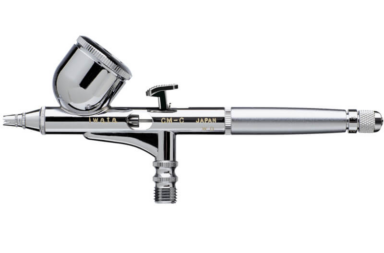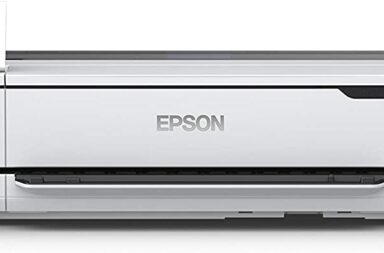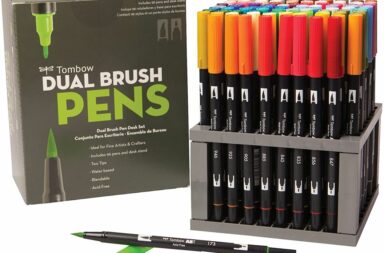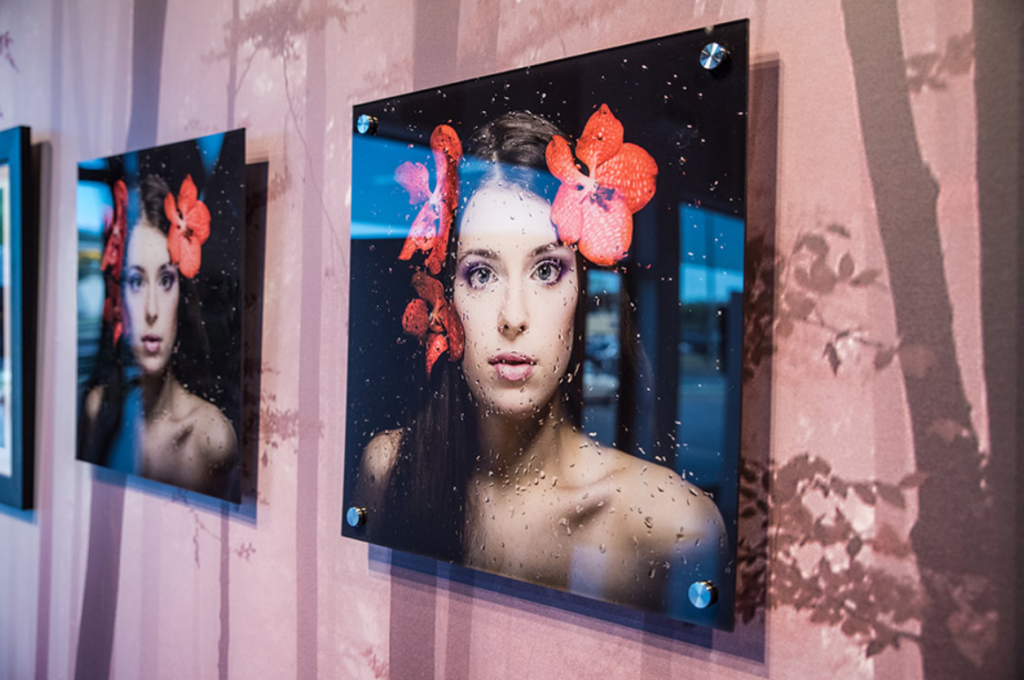
Two very popular options for art and photo prints are metal prints and acrylic prints. However, what exactly are the differences, pros and cons, and best uses for either of these options? We break down the details below:
The Verdict – Acrylic vs. Metal Prints
We break down the various details in the article below, but the basic verdict is this:
- Metal prints and acrylic prints are both great at presenting vibrant, rich colors.
- They are both great for similar styles (modern, sleek, shiny).
- They are both waterproof and great for high humidity areas (kitchens, bathrooms) unlike canvas prints.
- HD acrylic (i.e. face mounted acrylic, not direct printed) has a slightly higher resolution and detail than HD dye sublimation metal prints.
- Metal prints are more scratch resistant, and might be better for high trafficked areas.
That’s it! They are both great, but here are some additional details:
What are Metal Prints?
Metal prints are photos or artwork that are printed on sheets of metal (usually aluminum). They take the form of either brushed aluminum, white matte aluminum, or HD metal prints via dye sublimation.
How are Metal Prints Made?
Metal prints are either made by printed directly onto a piece of brushed or white matte aluminum, or via dye sublimation process.
Direct printing leverages the technology of inkjet printing in combination with special inks and UV curing to polymerize the ink and form a strong bond with the underlying metal.
Side Note: Direct printing on metal is referred to as Direct to Substrate Printing (DTSP). “Substrate” refers to the material being printed on, and can includes metals as well as plastics, ceramic, wood and acrylic. [1]
Dye sublimation leverages a transfer paper, where the image is printed and then placed on top of the aluminum. Heat and pressure are applied and the dye goes through the chemical process of sublimation (where it goes from solid to gas without going through the liquid phase). The result is the image dye getting attached at a molecular level to the underlying metal.
Best Uses of Metal Prints
Metal prints make great options for high contrast photos or artwork, those with vibrant colors, and those with dark backgrounds and that require a glossy finish. They are also good options for artwork that will be displayed outside, as metal prints are waterproof and scratch resistant.
Other photo print media, such as canvas prints, are better options for lighter, lower contrast artwork or photographs (such as beach landscapes or still life artwork).
Advantages of Metal Prints (Pros)
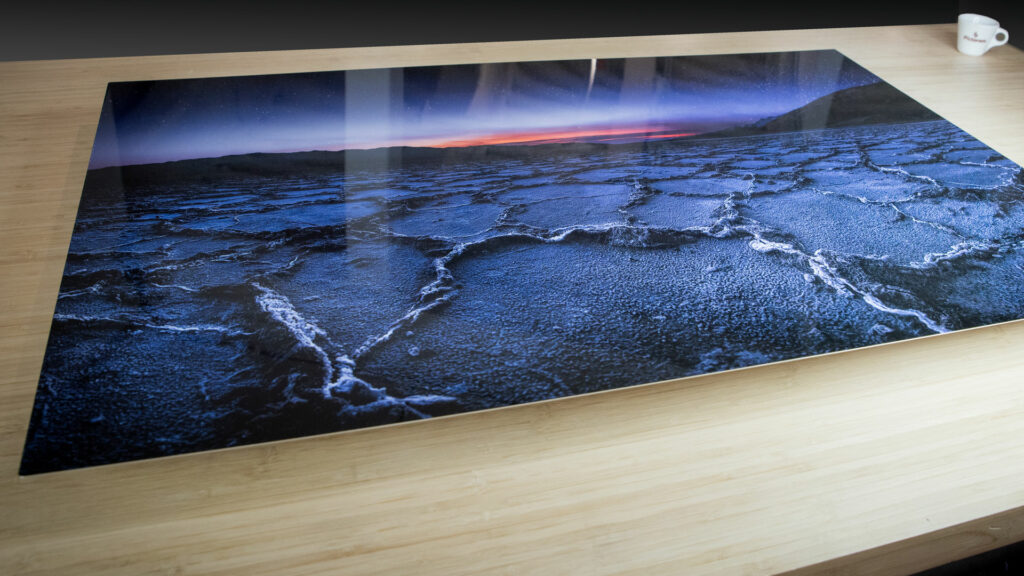
This HD Dye Sublimation Metal Print from Pictorem shows the true vibrancy of colors that is possible.
- Wonderfully vivid images and vibrant colors.
- Waterproof and scratch resistant.
- Great for outdoors or in high humidity environments (i.e. bathroom or kitchen)
Disadvantages of Metal Prints (Cons)
- Slightly less resolution than HD acrylic prints (when they are face mounted). This is because of the dye sublimation heat transfer process, which “softens” the pixels/dots of the metal print slightly. The effect is likely only noticeable to a very trained eye.
What are Acrylic Prints?
Acrylic prints are photo or art prints that are printed either directly onto a piece of acrylic plastic, or directly onto a high quality paper and then mounted to a piece of acrylic plastic.
Side Note: Acrylic plastic is known by the chemical name of Polymethyl Methacrylate, which is better known by the brand name Plexiglas™
How are Acrylic Prints Made?
Acrylic prints are made in two possible ways, direct printing on the acrylic material itself, or a printing on a paper medium and “face mounting” to the acrylic sheet.
The first, direct printing method leverages the same Direct to Substrate Printing (DTSP) technologies as mentioned above, and is able to be done at scale and at reduced cost. The end result, however, is arguably of less quality than the “face mounting” technique.
This second, “face mounting” method is more labor intensive and meticulous, and dates back to the earliest days of acrylic prints, but also yields a higher quality end product.
Best Uses of Acrylic Prints
Acrylic prints have much the same use case at metal prints, there isn’t much distinction here, with a few minor exceptions.
Acrylic prints are great for use with high contrast, vibrant color photography and artwork. Nature photography, or portraits set against dark background, black and white photography and other deep, rich color visuals all make great options, just like metal prints.
Acrylic is not as scratch resistant as metal, so consider placing it in lower traffic areas.
It’s also great for humid areas where canvas prints are not a great option (like bathrooms and kitchens).
Advantages of Acrylic Prints (Pros)
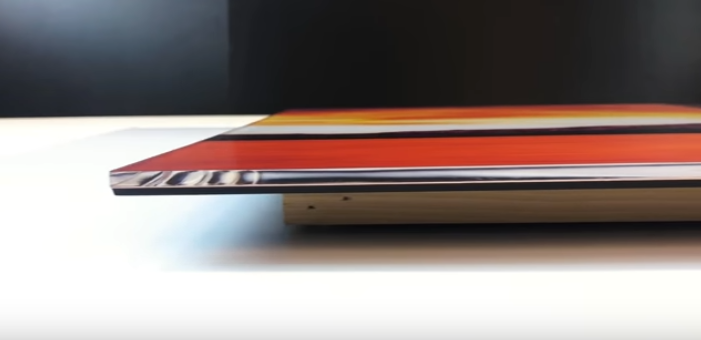
Side view of Acrylic Print – The polished borders give and thick edge give great effect, no need for a frame. (Source)
- When using face mounting acrylic prints, you will have higher resolution than metal prints.
- Wonderful side view as the acrylic is several millimeters thick, and don’t require a frame. The visual effect is eye popping.
- Provides protection to paper prints, as the acrylic is shatterproof.
- Provides a shiny gloss effect that can enhance artwork and photography.
Disadvantages of Acrylic Prints (Cons)
- The plastic is not resistant to fine, hairline scratches (not cracks, but scratches). Like your phones screen, these won’t necessarily be noticeable all the time, but are very annoying.
- To avoid this, keep prints is “low traffic” areas or out of reach of possible collisions or curious hands.
- There is noticeable glare from lighting, due to the high sheen of the acrylic material. Be very cognizant of your lighting in the area they are displayed (i.e. indirect lighting is a must).
